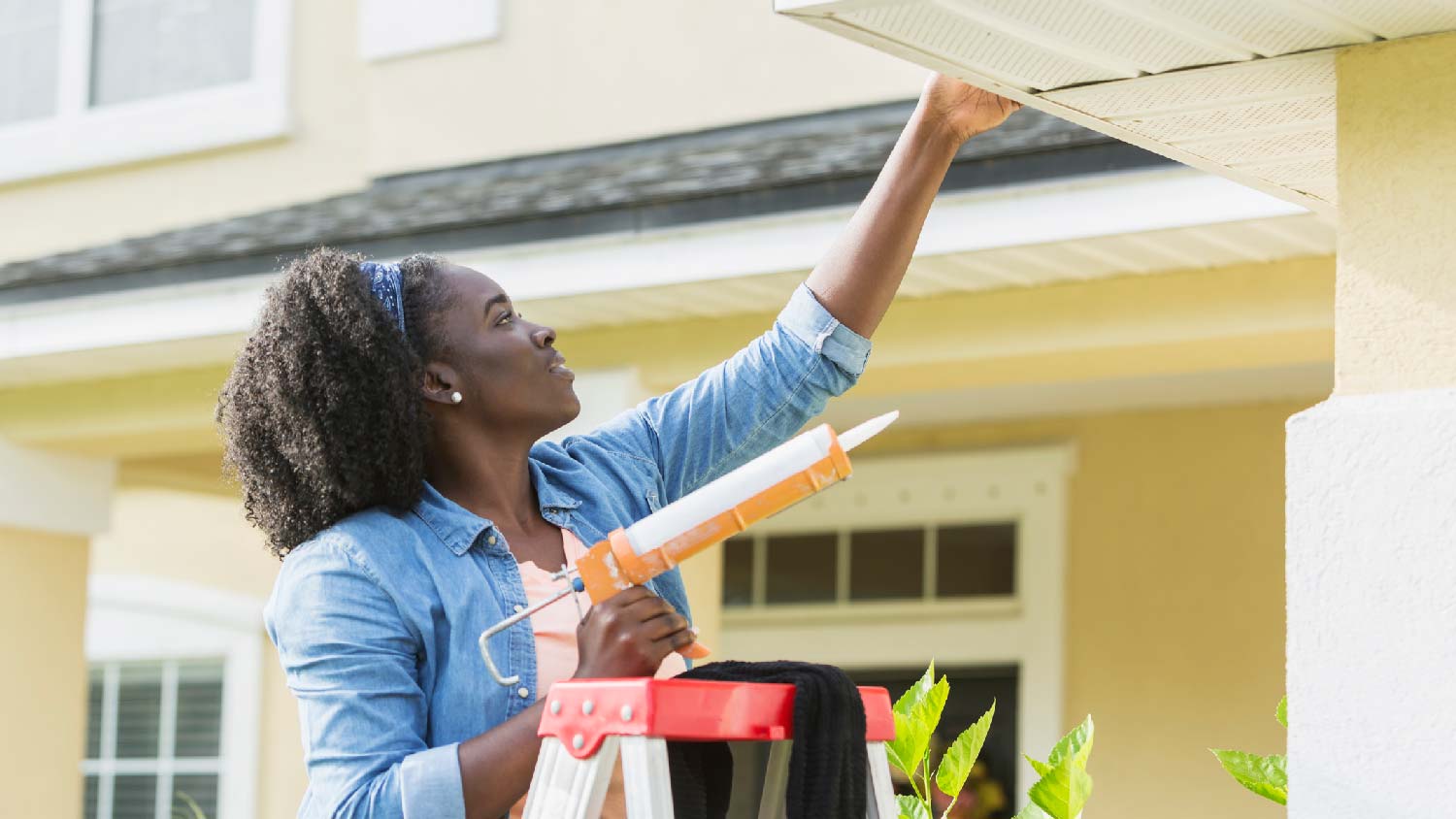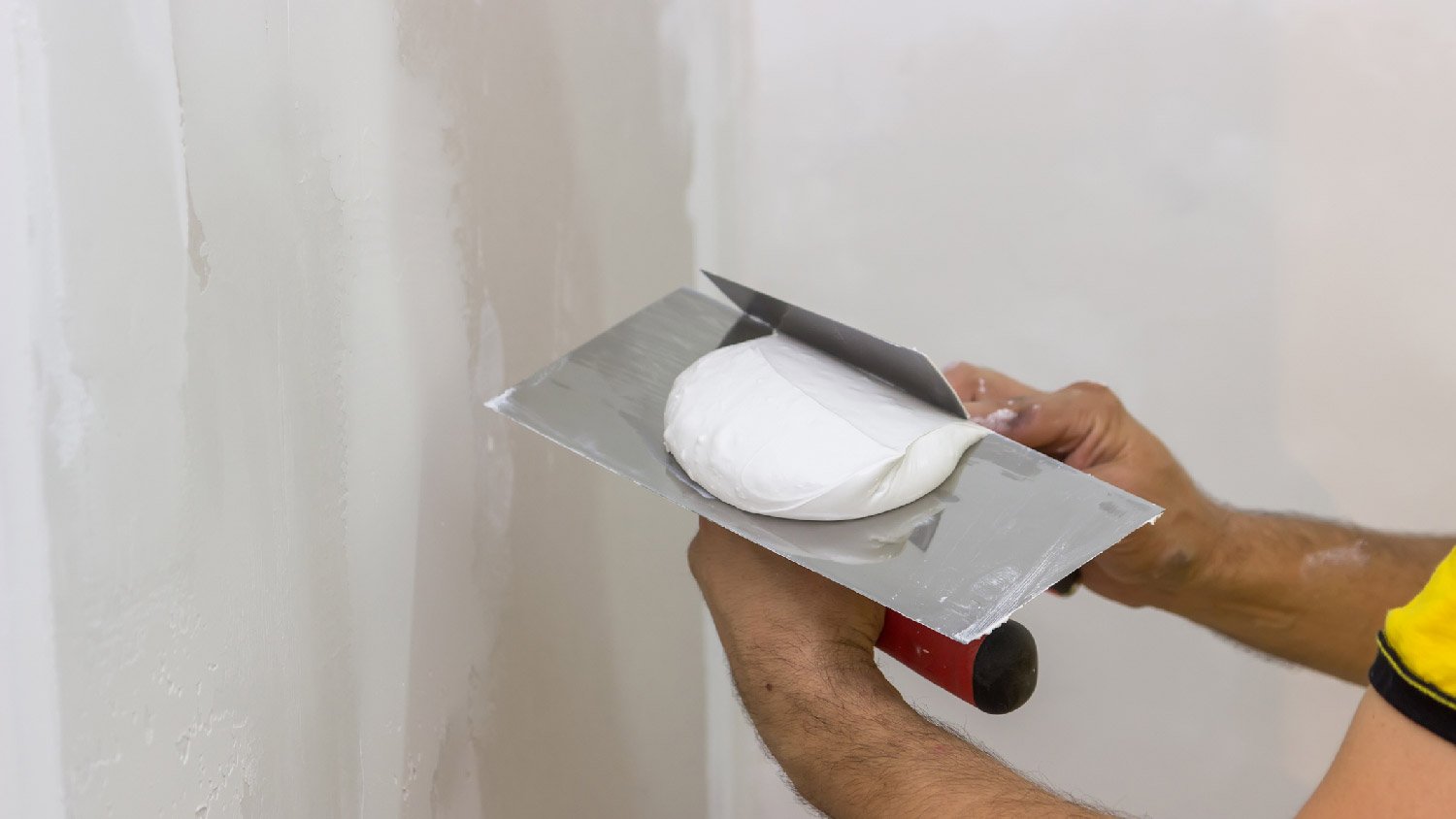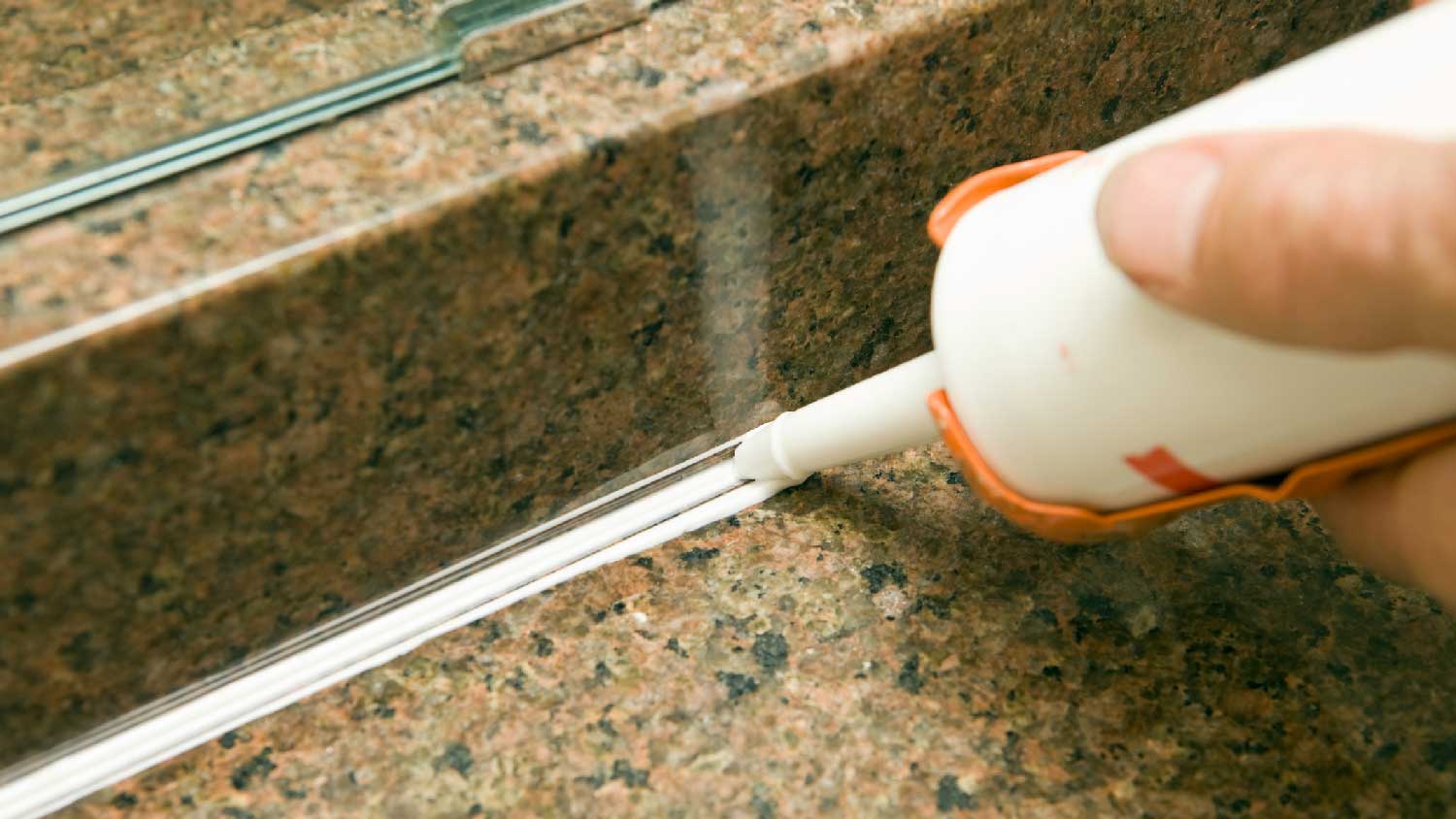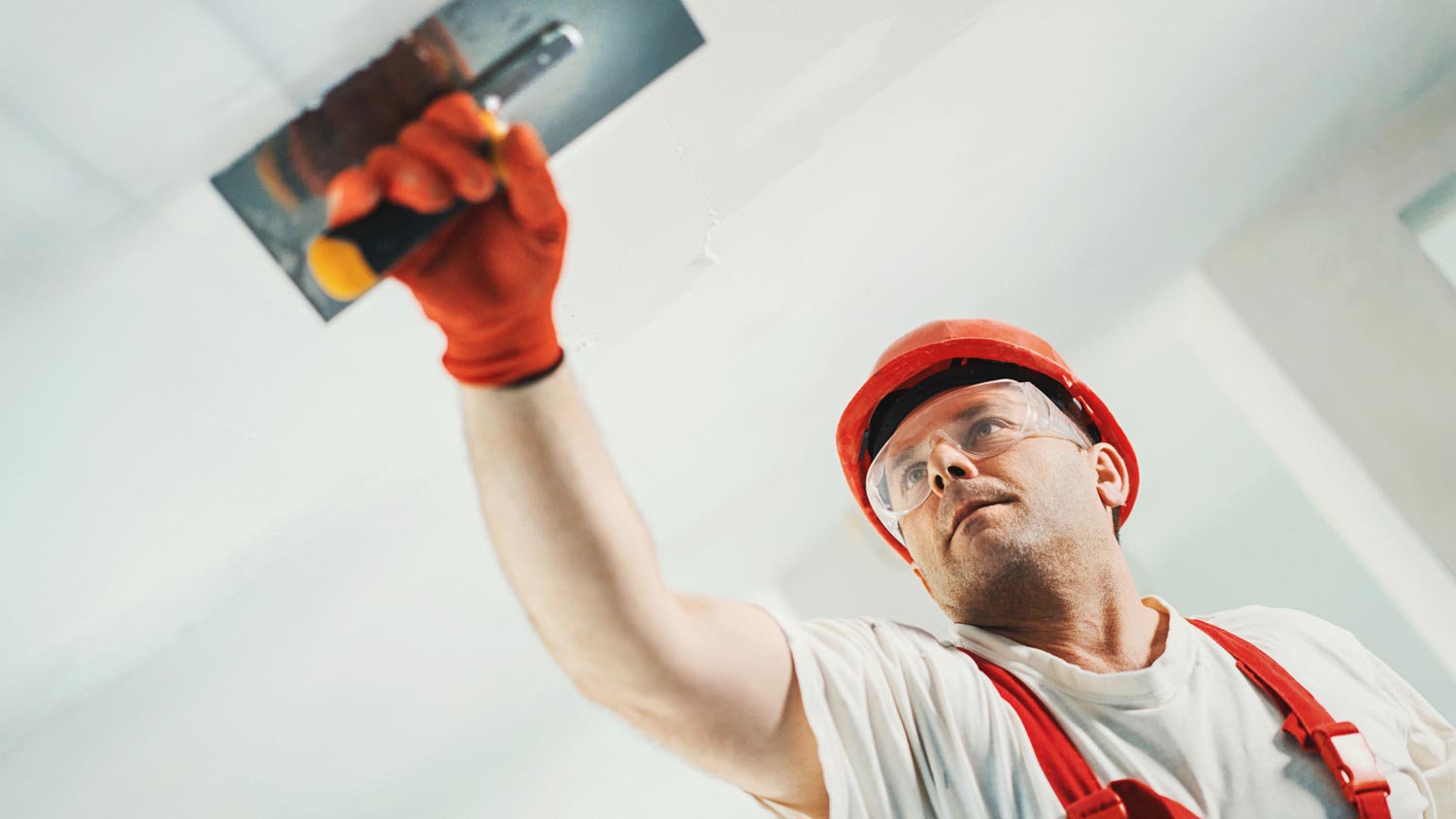
Pre-drywall inspection costs vary depending on the home size, build complexity, and reporting you receive. Estimate your budget with this cost guide.
Seal the deal with the right product


Caulk is waterproof, making it ideal for bathroom and kitchen applications.
Spackle dries hard, making it great for drywall, wood, brick, and stone surfaces.
If your project requires sanding and painting to match a surface, choose spackle.
When repairing a surface subject to movement, like doors and windows, choose caulk.
When it comes to home improvement and repair, the debate of caulk versus spackle often arises. Both products are essential for maintaining and enhancing the appearance and functionality of your living space, but they serve distinct purposes. We’re going to dive into the key differences, uses, pros, and cons of caulk and spackle to help you choose the right product for all of your DIYs.
The primary difference between caulk and spackle lies in their composition and intended use. Caulk is a flexible, waterproof material primarily used for sealing gaps and joints, and spackle is a putty-like substance designed for filling holes and cracks in drywall, wood, brick, and stone.
Caulk stays flexible after application, making it ideal for areas subject to movement, such as window frames and baseboards. On the other hand, spackle dries hard, making it perfect for repairing things that don’t move, like walls and floors.

Caulk is a versatile sealing material, and there are different formulations, such as latex, acrylic, and silicone caulks. People often fill gaps and seal joints with caulk in order to prevent air, water, and moisture from penetrating surfaces. Caulk is especially useful in bathrooms, kitchens, and exterior areas where water resistance is crucial.
| Pros | Cons |
|---|---|
| Waterproof | Not sandable |
| Flexible and versatile | May shrink |
| Easy to use | Less paintable |
Best for:
Sealing gaps around windows and doors
Waterproofing joints in bathrooms and kitchens
Filling cracks in exterior walls and siding
Preventing drafts and improving energy efficiency
Caulk provides a waterproof seal, making it ideal for bathrooms, kitchens, and exterior applications where moisture is a concern. Because it remains flexible after drying, it can move with the surfaces it seals, preventing cracks and gaps from reopening. It’s also available in many different formulations (like silicone, latex, and acrylic), so caulk can be used on a wide range of materials, including wood, metal, glass, and ceramic. Caulk is great for DIYers because it’s easy to apply and can be smoothed with just a finger for a clean finish.
One of the most significant drawbacks of caulk is that, once dried, it cannot be sanded smoothly, so it’s challenging to achieve a perfectly flat surface in some applications. Some types of caulk can also shrink slightly as they dry, so you may have to reapply caulk in larger gaps or cracks.
Certain types of caulk, particularly silicone, can be challenging to paint over, requiring specific primers or special formulations of paint. This makes caulk less ideal for areas that need an exact color match. However, a local caulking pro can always assist if your heart is set on caulk for this job.

Spackle is a lightweight, putty-like compound (often made of gypsum powder) used for filling small holes, cracks, and dents in walls and floors. It dries hard and can be sanded and painted over to blend seamlessly with the surrounding surface.
| Pros | Cons |
|---|---|
| Sandable and paintable | Not waterproof |
| Won’t shrink | Lacks flexibility |
| Dries quickly | Limited adhesion |
Best for:
Filling small holes and cracks in drywall
Repairing chips and dings in wood, brick, and stone
Preparing walls for painting
One of the best things about spackle is that it dries hard and can be sanded smoothly, making it easy to achieve a flat, even surface. Once dry, it can be easily painted over to match the surrounding wall color, providing an invisible repair. Spackle also dries relatively quickly, so you can complete your project faster. Another bonus of spackle is that it doesn’t shrink much, so it offers a consistent finish without the need for multiple applications.
On the downside, spackle is not suitable for areas exposed to frequent moisture, such as bathrooms or kitchens, because it can absorb water and deteriorate. Unlike caulk, spackle dries hard and lacks flexibility, so it’s not great for areas that move a lot, like doors, or those that expand and contract with temperature changes, like windows. It also may not adhere well to certain materials, such as metal or plastic, without a primer.

Understanding the nuances of caulk and spackle can help you decide which product to use for specific tasks. Let’s dive deeper to see how caulk and spackle compare head-to-head.
Caulk's flexibility and water resistance make it the more durable option. It can withstand temperature fluctuations, moisture, and movement, so it’s perfect for long-lasting seals around windows, doors, and bathrooms. Spackle is not designed to withstand significant movement or moisture and can crack under stress or expansion.
Spackle can last as long as the wall itself when applied correctly. It’s a permanent solution for interior wall repairs as long as it’s not exposed to moisture or significant movement. Caulk needs relatively frequent reapplication.
Caulk is specifically designed to be moisture-resistant, making it the go-to choice for bathrooms, kitchens, and exterior applications where water exposure is a concern. Spackle is not moisture-resistant and should not be used in areas exposed to water. It can absorb moisture, leading to deterioration and mold growth.
Applying caulk requires a caulking gun or squeeze tube, and achieving a perfectly smooth finish can take some practice. However, spackle is easy to apply with a putty knife, and you can smooth it out with minimal effort. Its application is straightforward, making it a great choice for DIYers of all skill levels.
While caulk can be used to seal gaps in wood, it is not ideal for repairing holes or cracks in wooden surfaces. Its flexibility makes it better suited for sealing rather than filling. Spackle is a better option for filling small holes and cracks in wood, creating a smooth, paintable surface. However, for larger repairs, epoxy or wood filler may be more appropriate.
You can easily sand spackle to a smooth finish and paint over it without any issues. It blends in with the surrounding wall, making it ideal for wall repairs. Most types of caulk are not sandable, and painting over caulk can be challenging, especially with silicone-based products.
Caulk can provide a neat look when applied correctly, but it’s not as seamless as spackle for wall repairs. Spackle creates an invisible repair when sanded and painted, making it perfect for maintaining the aesthetic of smooth, unbroken walls.
Caulk is inexpensive, with costs varying based on the formulation and quality. Silicone caulk is more expensive than latex or acrylic options. Spackle is also affordable, with prices depending on the brand and type. Lightweight spackles are more expensive than traditional formulations. A tube of caulk may cost slightly less than a bucket of spackle, but the bucket of spackle is likely to go further in DIY projects.
From average costs to expert advice, get all the answers you need to get your job done.

Pre-drywall inspection costs vary depending on the home size, build complexity, and reporting you receive. Estimate your budget with this cost guide.

Skim coating drywall is a great alternative to replacement, and is often more affordable. Use this guide to estimate the cost to skim coat walls in your home.

Drywall texture can create an attractive finish and add dimension to your home’s walls. This guide breaks down the factors that influence the cost to texture drywall.

Drywall is one of the most important things to get right during home renovations. Use this guide to figure out what type of drywall is best for your project.

Looking for the best moisture-resistant drywall for your next home project? Compare purple drywall vs. green drywall to narrow down your search.

Your drywall reeks, and you’re not sure why. Learn why your drywall smells like poop, and what to do about it.